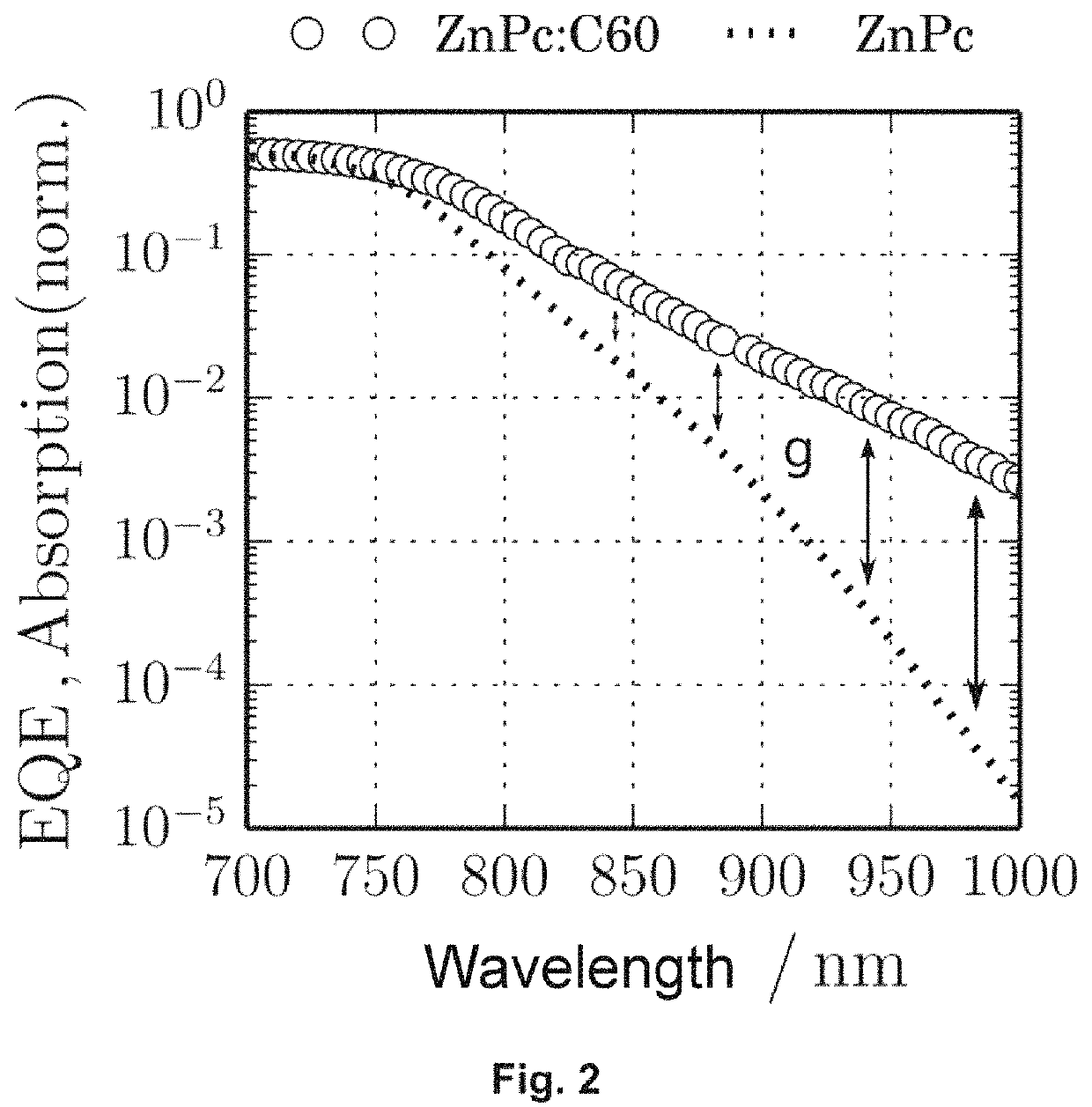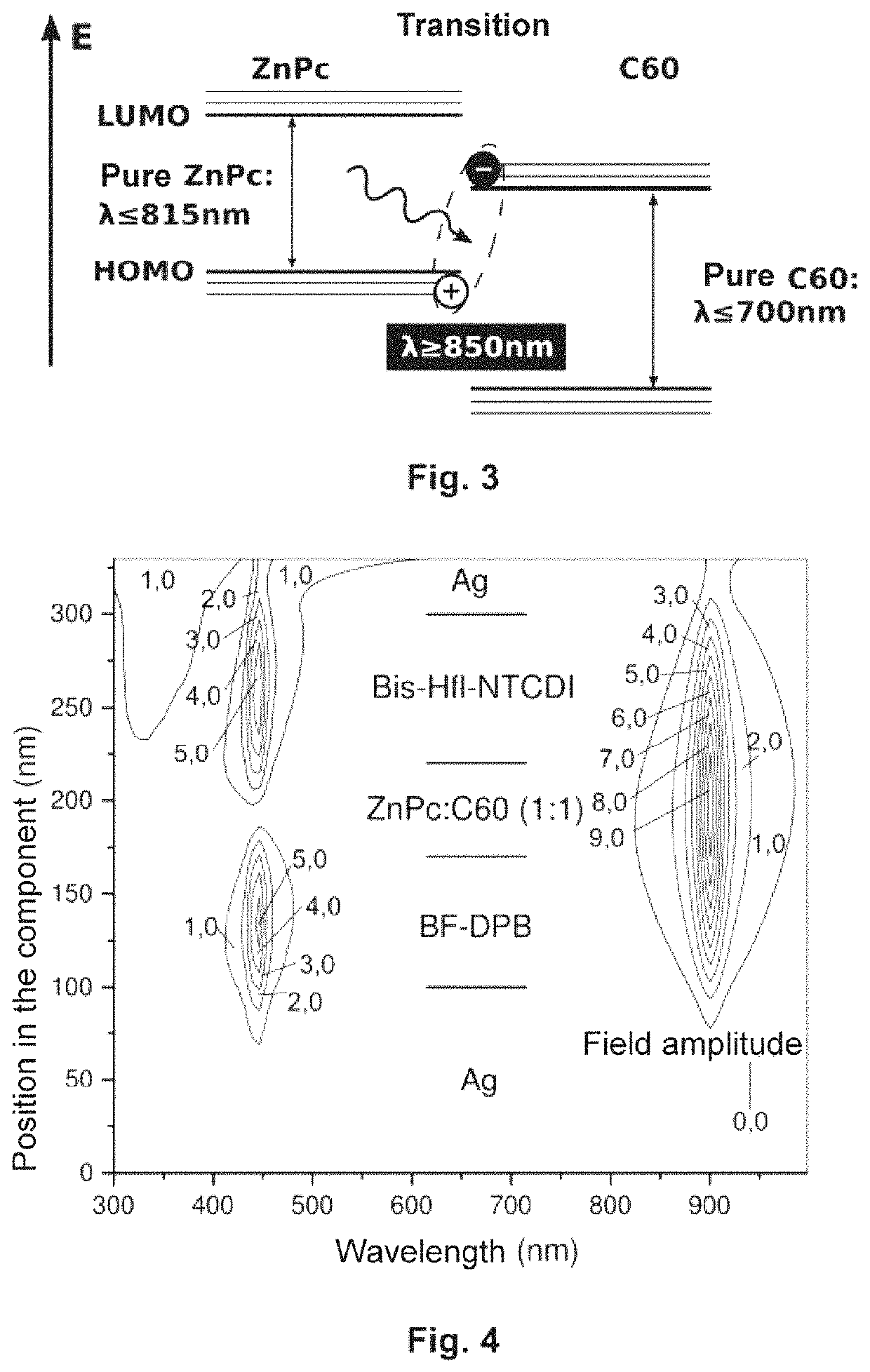Method for detecting and converting infrared electromagnetic radiation
- Summary
- Abstract
- Description
- Claims
- Application Information
AI Technical Summary
Benefits of technology
Problems solved by technology
Method used
Image
Examples
Embodiment Construction
[0155]The above-mentioned embodiments according to the invention are suitable for achieving the object. Combinations of the disclosed embodiments are also suitable for achieving the object. Preferred developments of the invention will emerge from the combinations of the claims or individual features thereof.
BRIEF DESCRIPTION OF THE DRAWING FIGURES
[0156]The invention will be explained in greater detail hereinafter on the basis of some practical examples and the associated figures. The practical examples are intended to describe the invention, although the invention is not limited to the practical examples.
Here:
[0157]FIG. 1 shows an illustration of various absorption mechanisms within the scope of organic semiconductors and subsequent extraction of the charge carriers. The left-hand illustration (a) shows the conventional singlet absorption of the individual materials. The right-hand illustration (b) shows the absorption of the direct interchromophoric charge transfer state as used in...
PUM
 Login to View More
Login to View More Abstract
Description
Claims
Application Information
 Login to View More
Login to View More - R&D
- Intellectual Property
- Life Sciences
- Materials
- Tech Scout
- Unparalleled Data Quality
- Higher Quality Content
- 60% Fewer Hallucinations
Browse by: Latest US Patents, China's latest patents, Technical Efficacy Thesaurus, Application Domain, Technology Topic, Popular Technical Reports.
© 2025 PatSnap. All rights reserved.Legal|Privacy policy|Modern Slavery Act Transparency Statement|Sitemap|About US| Contact US: help@patsnap.com



